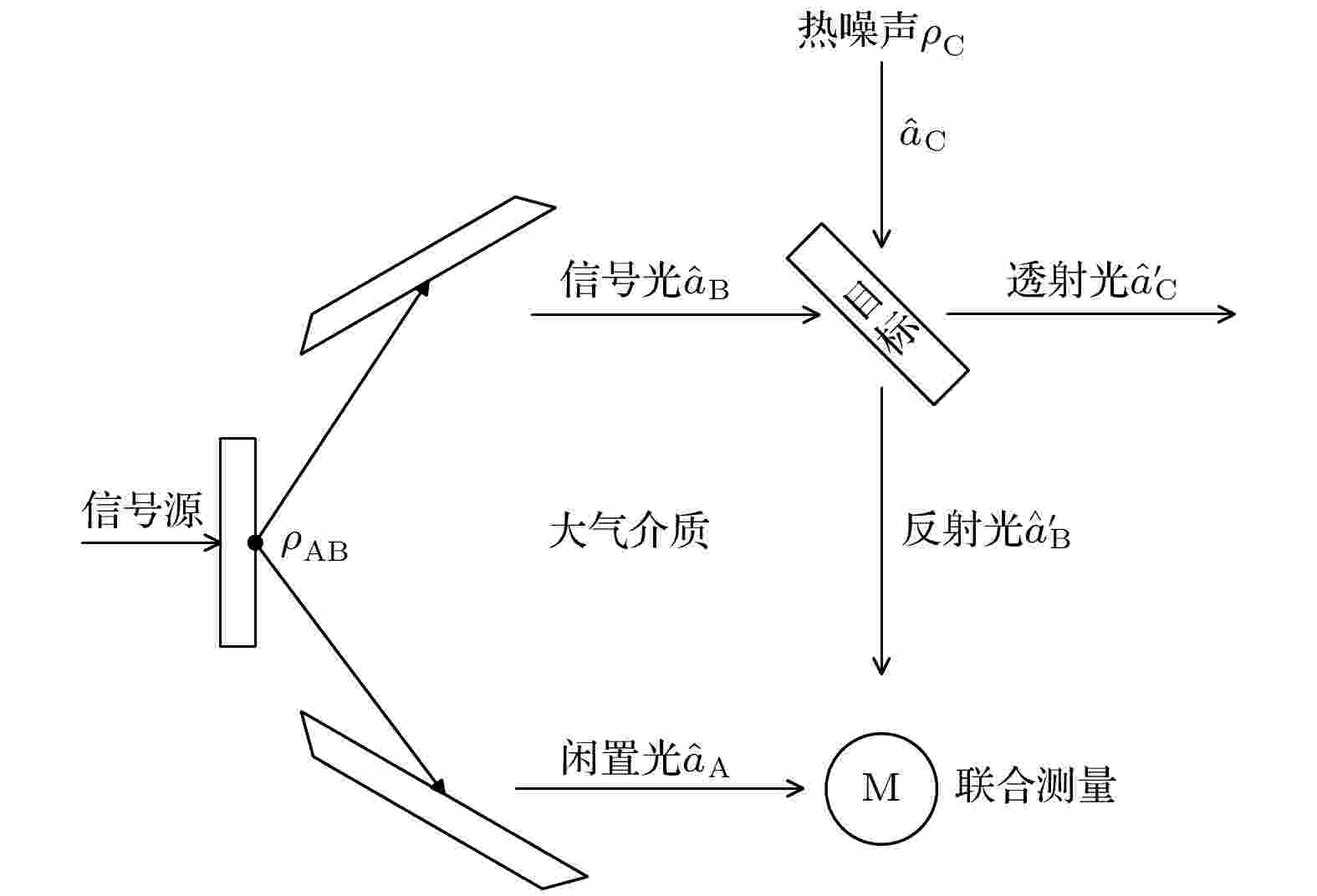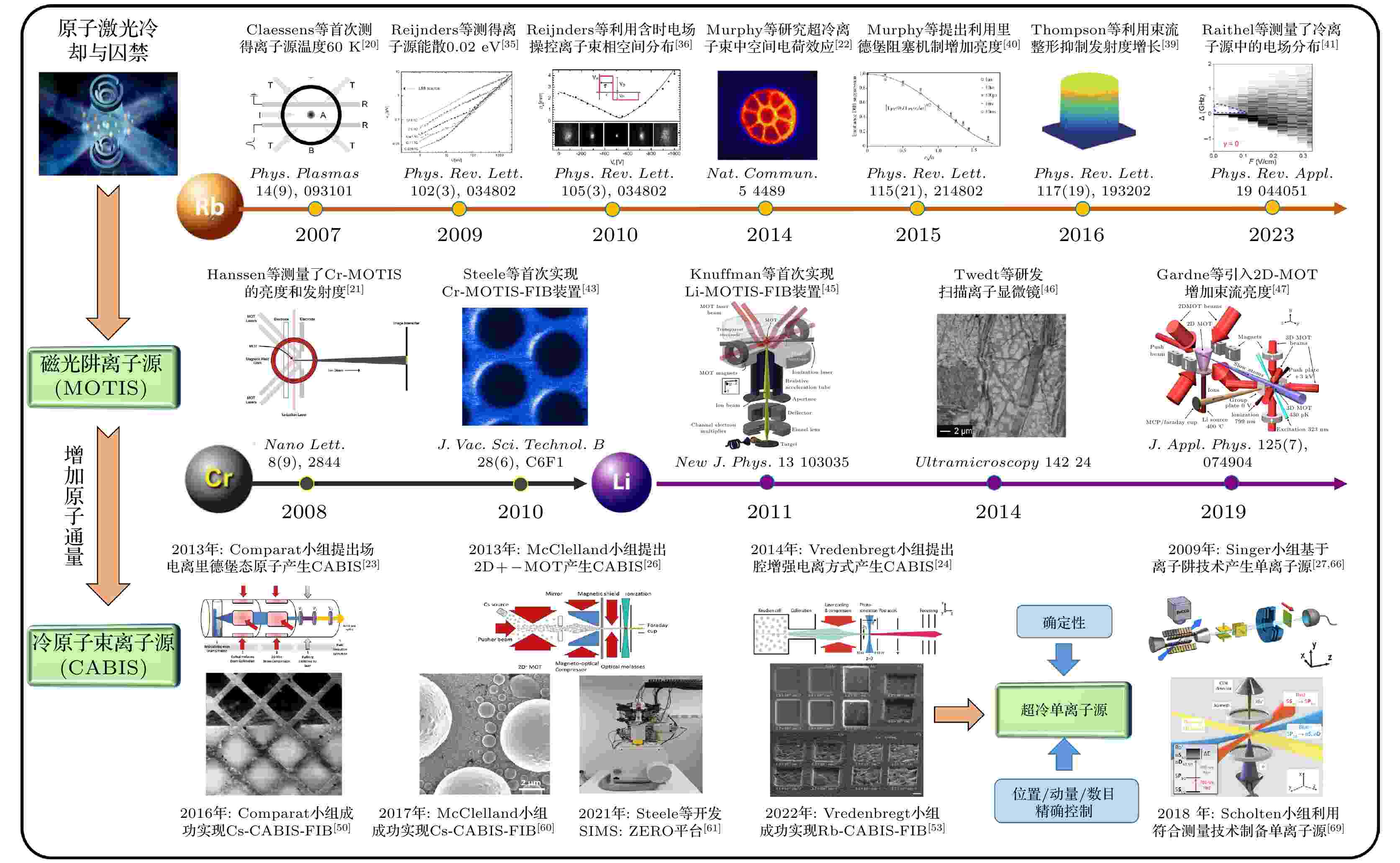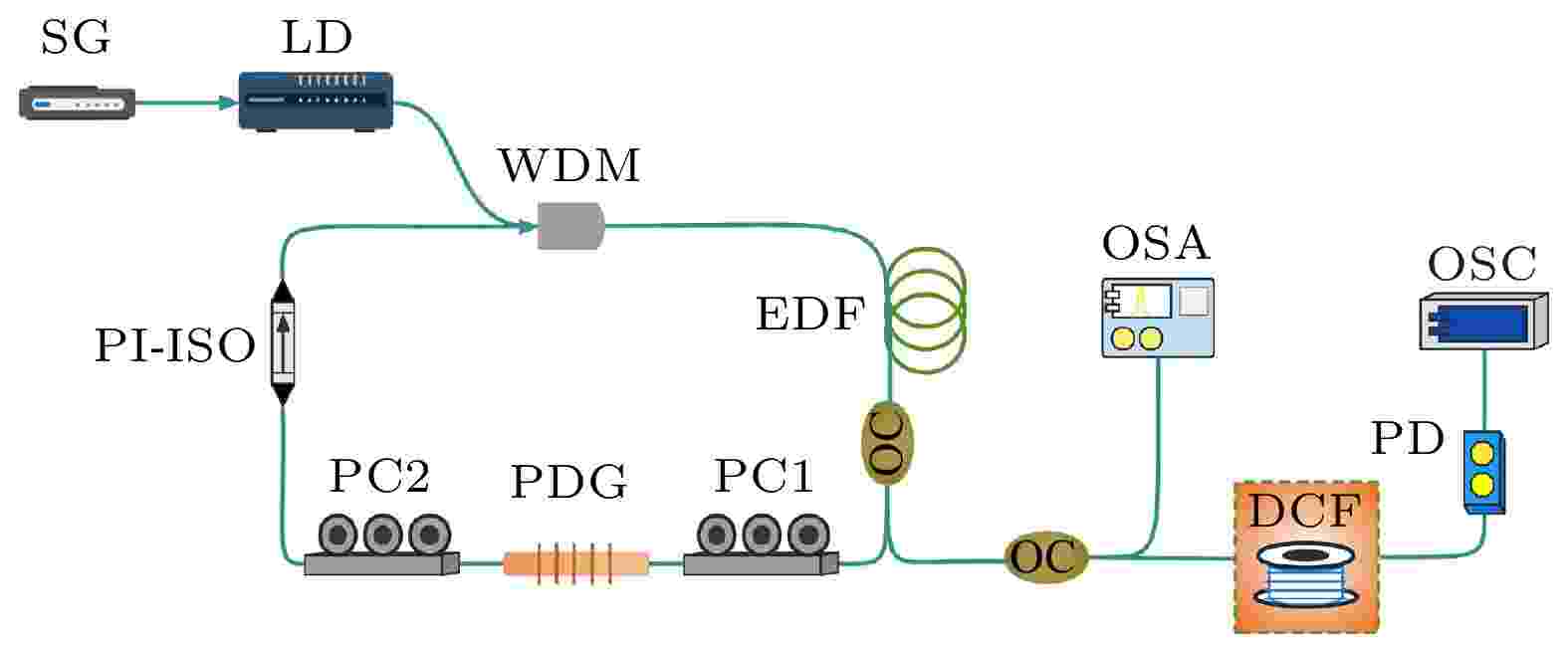Accepted Papers
Recent catalogue
- Vol.73 No.17
2024-09-05
- Vol.73 No.16
2024-08-20
- Vol.73 No.15
2024-08-05
- Vol.73 No.14
2024-07-20
- All Archive

SPECIAL TOPIC—Quantum communication and quantum network
2024, 73 (17): 170301.
doi:10.7498/aps.73.20240819
Abstract +
Most of the existing metropolitan quantum networks are implemented based on a single quantum key distribution protocol, and interconnecting metropolitan quantum networks implemented by different protocols are the development trend of large-scale quantum networks, but there are still some problems in the provision of inter-domain key services, such as low possibility of success and mismatch between key supply and demand. To solve the above problems, this paper proposes two on-demand inter-domain key service provisioning strategies for multi-domain cross-protocol quantum networks, namely, on-demand provisioning strategy based on BB84 bypass first (BB84-BF) and on-demand provisioning strategy based on MDI bypass first (MDI-BF). Meanwhile, a service provisioning model for multi-domain cross-protocol quantum networks is constructed, and an on-demand inter-domain key service provisioning algorithm is designed. Moreover, numerical simulations and performance evaluation are carried out under two scenarios: high key rate demand and low key rate demand for two-domain and three-domain quantum network topologies. Simulation results verify that the proposed on-demand provisioning strategies have better applicability to different multi-domain quantum networks. In addition, for different key rate requirements, the MDI-BF strategy and BB84-BF strategys have different performance advantages under different performance indicators. For example, in terms of the success possibility of inter-domain key service requests, the MDI-BF strategy is more suitable for the low key rate requirements (~30% higher than the traditional strategies in two domain topologies), while the BB84-BF strategy is more suitable for the high key rate requirements (~19% higher than the traditional strategies under two domain topologies). In addition, compared with the traditional strategies, the proposed on-demand provisioning strategies can increase the balance degree between key supply and demand by more than one order of magnitude. Hence, the proposed strategies can reduce the cost of inter-domain key service provisioning and improve the realistic security level.

GENERAL
2024, 73 (17): 170302.
doi:10.7498/aps.73.20240802
Abstract +

COVER ARTICLE
2024, 73 (17): 170501.
doi:10.7498/aps.73.20240796
Abstract +
The self-propulsion of active matter leads to many non-equilibrium self-organization phenomena, and the conformational freedom of polymer chains can produce unique equilibrium self-assembly behaviors, which stimulates cross-disciplinary research between active matter and polymer physics. In this work, we use molecular dynamics simulations to investigate the modulation of self-propulsion activity on the gel transition of ABA triblock copolymers. The research results indicate that under different active forces and attractive strengths, the gel states formed by ABA copolymers can be divided into three types: stable polymer gels with stable percolation paths and uniform spatial distribution, dynamic polymer gels with constantly changing percolation path and strand conformation, and collapsed polymer gels aggregating into large percolating clusters. The spatial uniformity of active gels is related not only to the concentration fluctuation during the formation of the network, but also to the inconsistent movement of the network chains caused by the activity, which is manifested in the rotation of crosslinking points in the flexible system and the directional movement of the bundles along their contour directions in the semi-flexible and rigid systems. In terms of topological conformation of polymer networks, when the attractive strength between A blocks is strong, the proportion of loop increases with the active force increasing. When attractive strength is weak, inter- and intra-chain binding are unstable, and the conformation is easily changed by the activity drive, noise and other chain collisions, so the proportion of loop decreases with the active force increasing. The branching number of crosslinking points varies with active force, which is not only affected by the attraction strength, but also related to the rigidity of the network chain. Generally, the branch number of crosslinking points in semi-flexible networks is larger than that in flexible and rigid networks. In addition, the directional motion of active polymers induces anomalous diffusion in stable polymer gels. This study contributes to the understanding of the collective behavior of active polymers and serves as a guide for designing and implementing active polymeric materials.

GENERAL
2024, 73 (17): 170502.
doi:10.7498/aps.73.20240872
Abstract +
The processing and transmission of biological neural information are realized via firing activities of neurons in different regions of brain. Memristors are regarded as ideal devices for emulating biological synapses because of their nanoscale size, non-volatility and synapse-like plasticity. Hence, investigating firing modes of memristor-coupled heterogeneous neurons is significant. This work focuses on modelling, firing modes and chaos synchronization of a memristor-coupled heterogeneous neuron. First, a novel locally active memristor is proposed, and its frequency characteristics, local activity, and non-volatility are analyzed. Then, the novel locally active memristor is introduced into the two-dimensional HR neuron and the two-dimensional FHN neuron to construct a novel memristor-coupled heterogeneous neuron model. In numerical simulations, by changing the coupling strength, it is found that the model exhibits the periodic spike firing mode, the chaotic spike firing mode, the periodic burst firing mode, and the random burst firing mode. Besides, the dynamic behavior of the novel memristor-coupled heterogeneous neuron can switch between periodic behavior and chaotic behavior by changing the initial state. Finally, based on the Lyapunov stability theory and the predefined-time stability theory, a novel predefined-time synchronization strategy is proposed and used to realize the chaos synchronization of the novel memristor-coupled heterogeneous neuron. The results show that compared with a finite-time synchronization strategy, a fixed-time synchronization strategy and a traditional predefined-time synchronization strategy, the novel predefined-time synchronization strategy has a short actual convergence time. Studying the firing modes and chaotic synchronization of the novel memristor-coupled heterogeneous neuron can help explore the neural functions of the brain and is also important in processing the neural signal and secure communication fields.

GENERAL
2024, 73 (17): 170601.
doi:10.7498/aps.73.20240840
Abstract +
Accurate measurement of length is an important foundation for ensuring the quality of advanced manufacturing equipment. In recent years, absolute ranging technology represented by frequency scanning interferometry (FSI) has gradually become a widely used ranging method in the manufacturing industry due to its advantages of high precision, high flexibility, and no range ambiguity. To address the repeatability and accuracy of length reference calibration in FSI absolute ranging, this paper proposes a method of accurately calibrating length reference based on bidirectional absorption spectrum feature fusion and proportional coefficient calibration, by using gas absorption spectroscopy to calibrate the delayed long fiber path length as a length reference in the distance measurement system online, and by using weighted linear least squares method to solve the differences in uncertainty among different absorption spectrum peaks. To address the problem of low repeatability in optical fiber path length calibration by using absorption spectroscopy, a method of utilizing bidirectional absorption spectrum feature fusion is proposed, thereby improving the precision of optical fiber path length calibration. To address the issue of insufficient accuracy in absolute optical frequency of absorption spectrum peaks, a calibration method by using a single absorption spectrum proportional coefficient is proposed. Compared with the idea of calibrating the optical frequency of each peak one by one, this method is simple and direct, thus improving the accuracy of fiber path length calibration. To verify the effectiveness of the above methods, the experiments on repeated precision evaluation, proportional coefficient calibration, and accuracy comparison are conducted separately. The experimental results show that the standard deviation for calibrating the optical path length of 164 m fiber is 10–30 μm. Under the conditions of system temperature rise and temperature stability, the distance measurement standard deviations are not greater than 5 μm in the measurement ranges of 0–10 m and 0–15 m, and the distance comparison residuals are not greater than ±4 μm, demonstrating the good distance measurement performance of the system. In the future, we will carry out thermal insulation and temperature control of the gas absorption chamber and the entire ranging optical path, and study the stability of the spectral proportionality coefficient and absorption peaks while controlling external environmental factors.

NUCLEAR PHYSICS
2024, 73 (17): 172401.
doi:10.7498/aps.73.20240656
Abstract +
When a hypersonic vehicle is flying in the near space region, the strong friction between the vehicle and the air can cause the air to ionize. As a result, the plasma sheath around the vehicle and the wake flow field behind it are formed, significantly affecting the electromagnetic (EM) scattering characteristics of the vehicle and resulting in the communication blackout. Therefore, the investigation of electron density distribution of the plasma sheath and wake flow field is of the great significance in the detection, communication, etc. of the hypersonic target. In order to meet the requirements for on-ground electron density distribution measurement of the transient plasma flow fields, the feasibility of measuring electron density profile with seven-channel microwave interferometer measurement system is demonstrated in this work. The wake plasma is modeled as a non-uniform multilayer medium, and the full-wave simulation software FEKO is used to calculate the phase-shift information of EM wave transmitting through non-uniform single-layered dielectric plate, uniform and non-uniform multi-layered dielectric plates. According to the simulation results, the dielectric constant of the substrate is retrieved and compared with the preset result. The retrieved results show that it is feasible that the dielectric constant distribution of non-uniform multi-layered dielectric plate is measured by utilizing the proposed microwave interferometer system with one transmission port and seven receptions. The amplitude-phase dynamic range analysis of the proposed Ka-band microwave measurement system is also carried out. The key technologies including large instantaneous amplitude-phase dynamic range and ray tracking inversion algorithm for two-dimensional (2-D) electron density distribution are also developed. Finally, the complete scheme of Ka-band seven-channel microwave interferometer measurement system is introduced. The system includes one lens antenna to generate the required plane wave and seven open-ended waveguide receiving antennas which are asymmetrically arranged to improve the lateral spatial resolution of the system. The system exhibits the amplitude dynamic range and the phase dynamic range of over 65 dB and 180° under 1 MHz IF bandwidth respectively. The plasma electron density distributions are measured by utilizing the proposed seven-channel microwave interferometer system in the ballistic range and multi-functional shock tube. The response time of the system is smaller than 1μs, satisfying the requirement for the two-dimensional distribution measurement of the transient plasma flow field generated by the ballistic range and multi-functional shock tube. The differences between experimental and numerical results are less than 0.5 order of magnitude, and the variations in transient plasma generated in both ballistic target and shock tube equipments are well detected. The measurement range of plasma electron density is 1010-1013cm–3and the spatial resolution is better than 15mm. In addition, the proposed ray tracing method is also used to invert the two-dimensional (2D) electron density distributions of both square layered model and cylindrical layered model under identical experimental state. The results are in consistent with each other, indicating that the proposed ray tracing method can be used in the inversion of 2D electron density distribution of plasma with different shapes.

ATOMIC AND MOLECULAR PHYSICS
2024, 73 (17): 173101.
doi:10.7498/aps.73.20240461
Abstract +
Hydrazone molecular switches have significant application value in supramolecular chemistry. A new type of hydrazone molecular switch, named isatin N2-diphenylhydrazone, has been synthesized. Owing to its cis-trans isomerization characteristics under visible light excitation, ease of synthesizing of derivatives, and sensitivity to external stimuli, it has important application value in the field of biochemistry. Because of its forward and backward visible light excitation characteristics, it is considered a class of compound that is very suitable for molecular switches, and it has a wide application value in fields such as biotechnology. In addition, the derivatives compound exhibits strong interactions with negative ions, which enhances its function as a molecular switch, making it a four-state molecular switch that can be achieved by a single molecule. However, the photo-induced isomerization mechanism of these new molecular switches is not yet clear, and whether there are novel phenomena in the isomerization process is also unknown. In this work, a semi empirical OM2/MRCI based trajectory surface hopping dynamics method is adopted to systematically study a photo induced isomerization mechanism based on the E-Z isomerization process of the isatin N2-diphenylhydrazones molecular switch. Optimization configuration and the average lifetime of the first excited S1state are obtained by using the semi-empirical OM2/MRCI method of molecular switch. It is found that the average lifetime of the S1excited state of the E-configuration molecular switch is about 107 fs, and the quantum yield of E-Z isomerization of the molecular switch is 16.01%. By calculating the photo induced isomerization process of the molecular switch, two different isomerization mechanisms of the molecular switch are identified. In addition to the traditional molecular switch isomerization mechanism revolving around the C=N bond, a new isomerization mechanism, i.e. the face-to-face twisting of the molecular switch rotor part is elucidated. By calculating the time-resolved fluorescence radiation spectrum, it is predicted that there may be a very fast fluorescence quenching phenomenon occurring in about 75 fs in the isomerization process, slightly faster than the S1average decay events (107 fs). The information about wavelength-resolved attenuation at different times is also calculated, which reflects the ultrafast fluorescence quenching process accompanied by fluorescence red shift, ranging from 2.1 × 104cm–1to 3.4 × 104cm–1. By comparing the calculated fluorescence spectra with the average lifetime of excited states, the existence of “dark states” is proposed, and possible explanations for the existence of “dark states” are provided, and those “dark states” may be related to lower quantum yields. The research results can provide theoretical guidance for the design and application of new molecular switches. The ease of synthesis and sensitivity to external stimuli of its derivatives make those compounds extremely valuable in molecular switching and light measurement applications.

INSTRUMENTATION AND MEASUREMENT
2024, 73 (17): 173701.
doi:10.7498/aps.73.20240695
Abstract +

ELECTROMAGNETISM, OPTICS, ACOUSTICS, HEAT TRANSFER, CLASSICAL MECHANICS, AND FLUID DYNAMICS
2024, 73 (17): 174201.
doi:10.7498/aps.73.20240673
Abstract +
In this paper, the mode-locked pulse generation and annihilation dynamics in ultrafast fiber lasers based on pump intensity modulation are investigated by using real-time Fourier transform spectral probing. The results show that the laser outputs stable mode-locked pulses when the pump modulation voltage is at a high level. As the modulation voltage jumps to a low level, the intensity of the mode-locked pulse decreases, and then undergoes a period of decaying oscillation before annihilation occurs, and after ~5 μs the soliton is reconstructed from the noise, accompanied by the generation of theQ-modulation instability. In the low-level phase, the annihilation process in the laser cavity occurs continuously with a period of ~55 μs. By changing the duty cycle of the modulation pump, it is possible to control the the number of times solitons continuously annihilate under low-level modulation. Further, the continuous switching process of mode-locking and soliton annihilation is related to the modulation frequency of the pump, and the increase of the modulation frequency can effectively shorten the duration of the two states, thus reducing the number of soliton annihilations. In addition, by reducing the value of the low level, the gain in the laser cavity can be reduced, resulting in a shorter period of successive soliton annihilation. The results of the study are conducive to an in-depth understanding of the formation and annihilation dynamics of solitons, and provide new perspectives for developing various operation mechanisms of ultrafast lasers.

ELECTROMAGNETISM, OPTICS, ACOUSTICS, HEAT TRANSFER, CLASSICAL MECHANICS, AND FLUID DYNAMICS
2024, 73 (17): 174202.
doi:10.7498/aps.73.20240860
Abstract +
The exploration and utilization of marine resources has promoted the rapid development of marine science and technology, and has put forward higher requirements for underwater communication technology. Long distance underwater wireless optical communication (UWOC) requires the selection of light source on the transmitter side. Laser diodes (LDs) have excellent portability and maneuverability, and have been widely used in the UWOC systems. However, their beam quality is not so good and it is difficult to modulate under high power. In recent years, vertical-external-cavity surface-emitting laser (VECSEL) has received much attention due to its high output power and good beam quality. This work is to explore the advantages of using a 490-nm blue VECSEL as a light source in UWOC, and to improve the performance of the UWOC system by the soft-decision pulse-position modulation (PPM). First, the optical power attenuation coefficient of the channel is obtained, and the measuredcis about 0.0591 m–1in a 96-m-long tap channel. Subsequently, soft-decision and hard-decision are simulated and experimentally verified. Both simulations and measurements show that the bit error rate (BER) can be significantly reduced with soft-decision. Afterwards, we improve the system by using the soft-decision algorithm and investigate the communication performance of 64 PPMs at different bandwidths by adjusting the PPM signal rate. Finally, 50 MHz is chosen as a signal rate in the experiment. Then a UWOC system is demonstrated in this work. The transmitter side consists of a 490-nm VECSEL light source with an acousto-optic modulator (AOM). The pseudo-random binary sequence (PRBS) is loaded into the arbitrary waveform generator (AWG) for digital-to-analog conversion after PPM modulation, and the analog signal is sent to the driver of the AOM for acousto-optic modulation of the incident beam. The laser is focused before entering the AOM and then collimated after having exited to reduce its divergence. The modulated laser beam passes through a distance of 96 m in the tank by using multiple mirrors on both sides of the tank. Then, the beam is focused by a lens to the avalanche photodiode (APD) for photoelectric conversion in the end, and the signal is processed by a mixed signal oscilloscope (MSO) after data acquisition. A soft-decision algorithm is introduced to further optimize the performance of the PPM modulation. When the optical signal passes through a relatively long distance of 96 m, the measured BER is as low as 1.9 × 10–5. This indicates that the soft-decision PPM-based 490 nm blue VECSEL UWOC system performs very well.

- 1
- 2
- 3
- 4
- 5
- ...
- 11
- 12









